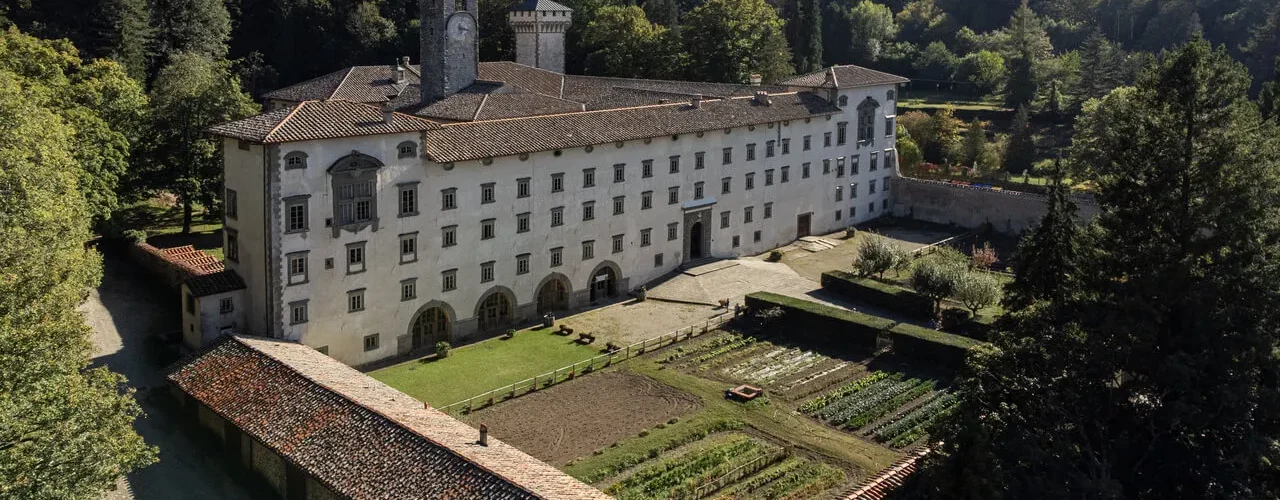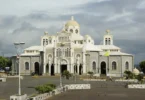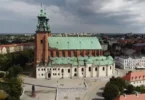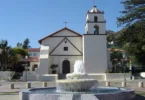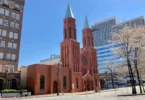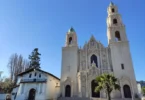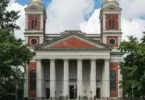Introduction
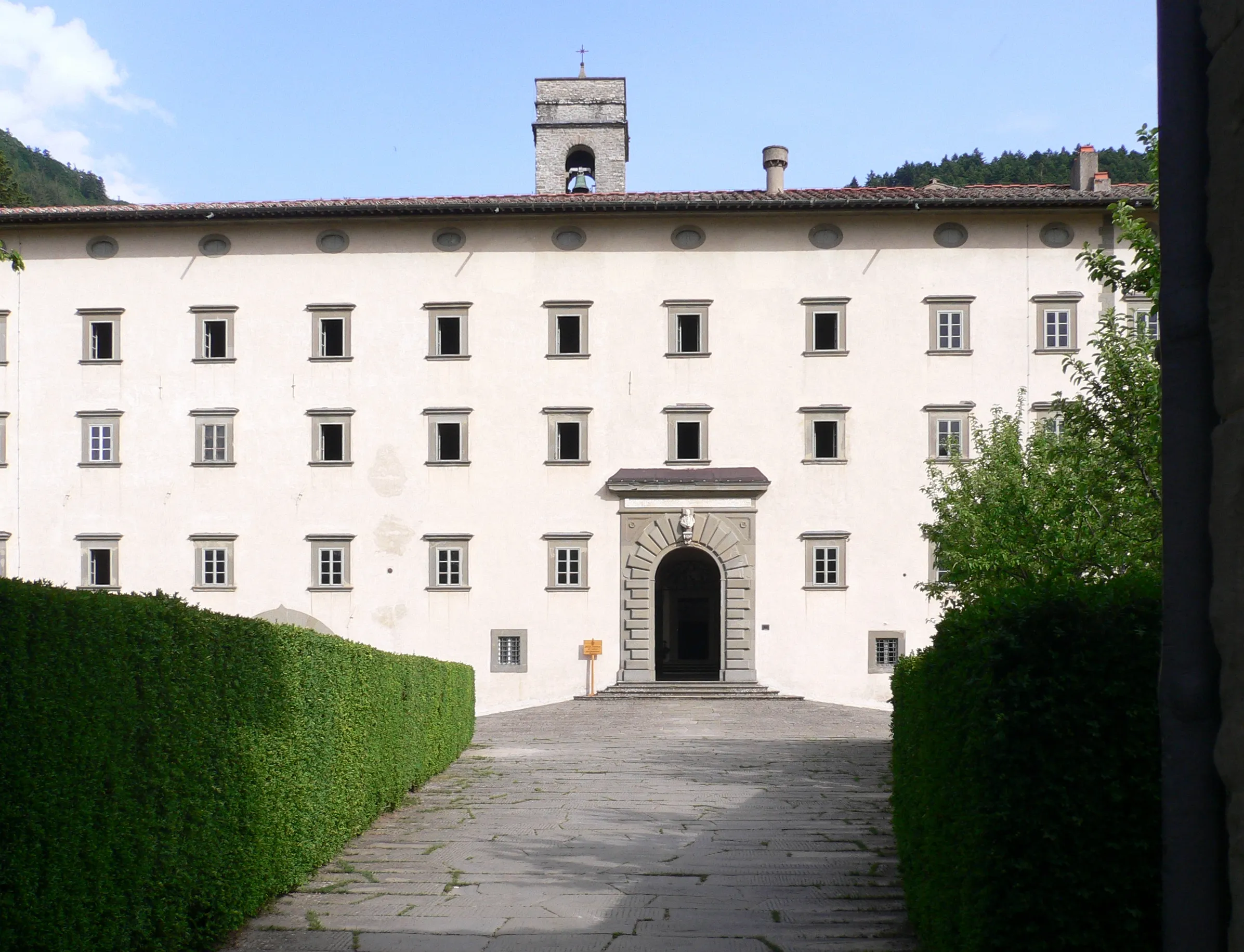
The Abbey of Vallombrosa is located in the locality of Vallombrosa in the municipality of Reggello, situated in the province of Florence, within the Diocese of Fiesole. Recognized for its historical and religious significance, the abbey church was elevated to the status of a minor basilica by Pope Pius XII in November 1950. The abbey is also an Italian national monument, showcasing its importance in both religious and cultural heritage. Founded in 1038 by Giovanni Gualberto, a Florentine nobleman, the abbey became the mother house of the Vallumbrosan Order, a Benedictine monastic community. Located in the Apennine mountains, around 30 kilometers southeast of Florence, the abbey is surrounded by lush forests of beech and fir trees, contributing to its serene and picturesque environment. Vallombrosa has remained a prominent site for both religious devotion and monastic life throughout the centuries.
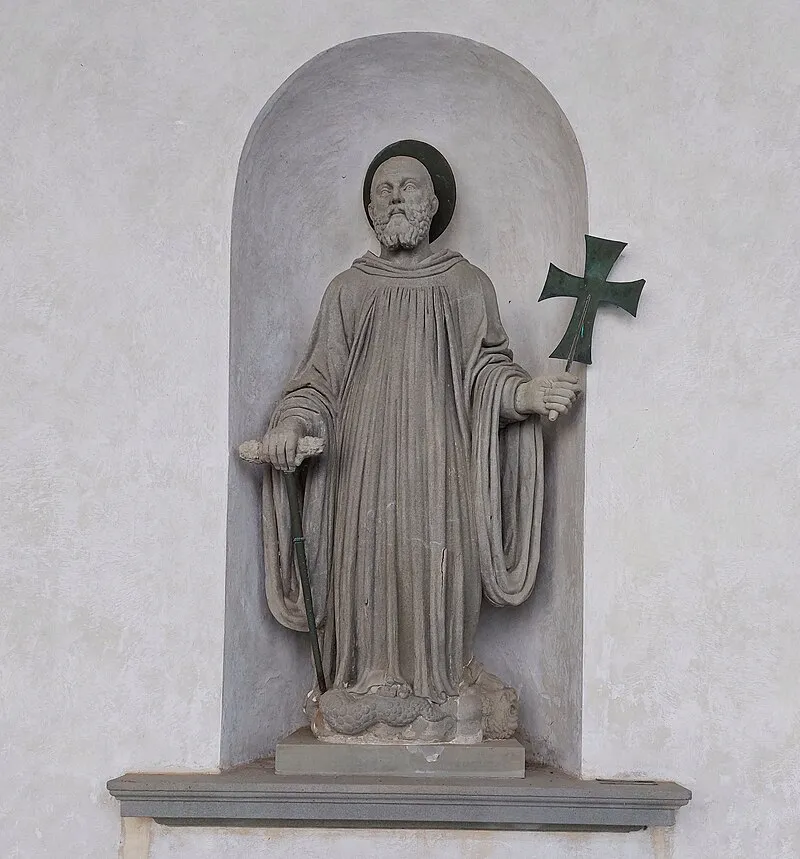
The Abbey of Vallombrosa traces its origins to 1036 when Saint John Gualberto, a Florentine nobleman, retreated with a small group of followers to a place then known as Acquabella sul Pratomagno. This marked the beginning of the Vallombrosan Order, which would become a significant part of the religious, civil, and social landscape of Italy. Saint John Gualberto’s monastic reform was based on a vision of evangelical poverty and community living. His efforts, including his stance against simony, led him to engage in the investiture dispute between the papacy and the Holy Roman Empire, further highlighting the central role of the reform in the broader Church renewal. The first mention of Vallombrosa appears in documents referring to a donation by the cleric Alberto to the community, marking the establishment of the first wooden oratory. In 1039, Abbess Itta of the Monastery of Sant’Ellero donated land to the growing community. The bishop of Paderborn consecrated the altar of the oratory in 1038, making it the earliest structure of stone within the abbey complex. By 1058, the entire stone church was consecrated by Cardinal Umberto di Silva Candida, signaling the early growth and formal establishment of the abbey.
As the Vallombrosan community grew, it became necessary to expand the abbey. In 1224, work began on a larger church, which was completed by 1230. The bell tower, built during this time, is still part of the abbey today. In the 15th century, under the leadership of Abbot Francesco Altoviti, major works were undertaken, including the creation of a large cloister, sacristy, tower, refectory, and kitchen, all of which were completed by 1476. Abbot Biagio Milanesi, who succeeded Altoviti, was a prominent figure who contributed to the abbey’s intellectual and artistic legacy. Milanesi’s contributions included commissioning a library and artworks such as an altarpiece by Perugino, and works by Raffaellino del Garbo, Luca della Robbia, and others. Further architectural advancements took place in the 16th century, including the Cloister of the Mascherone designed by Alfonso Parigi between 1584 and 1585. The abbey underwent another transformation in the 17th century, with renovations such as the rebuilding of the novitiate under the guidance of architect Gherardo Silvani. In 1644, following the collapse of the church portico, Abbot Guglielmo Rasi designed the loggia that remains in place today. The church was also modernized in the early 18th century, with new altars, plastered walls, and frescoes celebrating the saints of the order, painted by artists like Antonio Puglieschi and Niccolò Lapi.
In 1808, the Napoleonic suppression led to the dissolution of many monasteries, including Vallombrosa. During the Savoy era in 1867, the abbey became state-owned, leading to a decline in the abbey’s religious activities. However, in 1949, the Vallombrosan Order regained control of the abbey.
The Abbey of Vallombrosa is also historically significant for its connection to Pope Urban II, who visited the abbey on 7 October 1096 and urged the Vallombrosans to support the First Crusade. Additionally, the Abbey is famously associated with John Milton, who, although unlikely to have visited, is believed to have been inspired by the abbey in his Paradise Lost, leading to its connection with other famous literary figures, including William Wordsworth, Frances Trollope, and Mary Shelley. The 19th century also brought George Perkins Marsh, an American ecologist, whose influence helped establish the Istituto Superiore Forestale Nazionale in the secularized monastery in 1867. Today, the abbey remains a cultural and tourist landmark, renowned for its historical significance and its artistic heritage, including works by Perugino, Raffaellino del Garbo, and Luca della Robbia, alongside local attractions like the Antica Farmacia, offering herbal teas and traditional liqueurs made using ancient recipes.
Architecture of Basilica of Our Lady of Assumption Vallombrosa, Italy
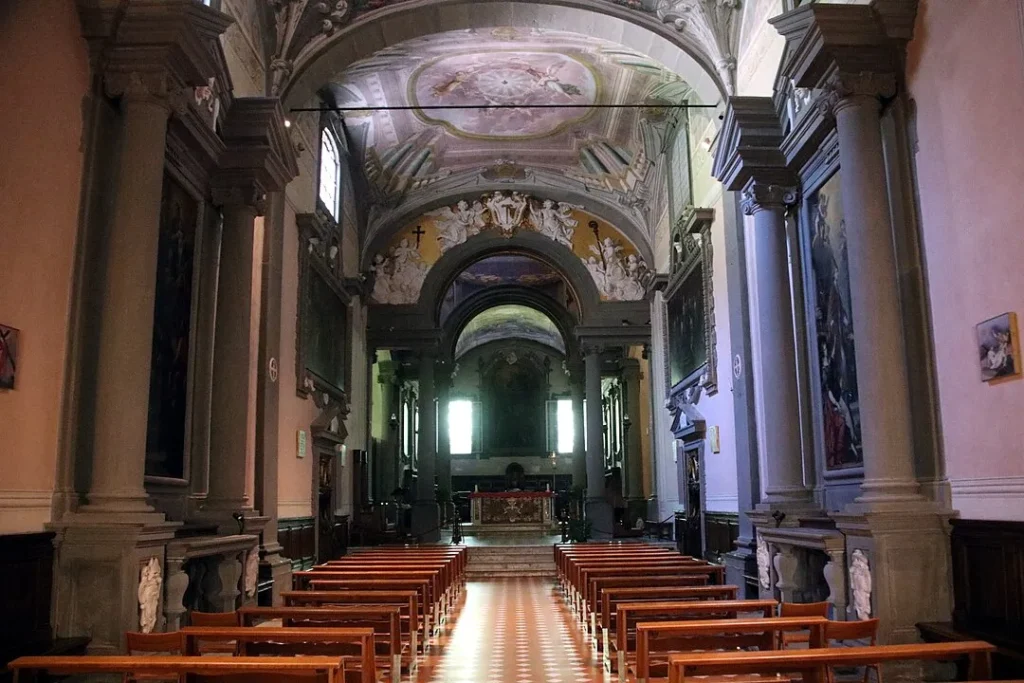
Architectural Style: Romanesque Architecture
External Architecture
The Abbey of Vallombrosa presents an austere yet elegantly restrained exterior, maintaining a classical monastic appearance. The prominent features include the 12th-century bell tower and the 15th-century tower, creating a harmonious blend of history and architectural evolution. The abbey is enclosed by high walls and can be accessed through a beautiful 18th-century gate. The large square in front of the abbey, which functions as a garden, is a serene space contributing to the overall tranquility of the site.
The facade of the monastery was designed by Gherardo Silvani between 1637 and 1647, displaying a notable sense of harmony, grandeur, and sobriety. The facade’s symmetry is punctuated by a series of windows, each designed with restraint. The uniformity of the front is enlivened by the two raised lateral bodies, featuring large cross windows, and a rusticated portal. The central niche above the entrance contains a statue of Saint John Gualberto, sculpted by Bastiano Salvini in 1632, serving as the geometric focal point of the design and emphasizing the verticality of the structure. Flanking the niche are coats of arms—those of the Medici family and the Vallombrosan Order, the latter featuring an image of a monk holding a tau-shaped staff. In front of the monastery is a small courtyard that leads to the church. The church’s entrance portico is composed of three arches, ending in two lateral Serlian windows, a design by Abbot Rasi following the collapse of the original loggia in 1644. The portico incorporates elements of the late 16th century, adding to its historical depth.
Interior Architecture of the Abbey Church
The interior of the abbey church retains its 1230 layout, with a single nave and a transept, typical of the Vallombrosan style, which follows a T-shaped plan. Despite its ancient origins, the church’s appearance has evolved significantly, particularly in the 16th and 18th centuries. Much of the medieval structure has been covered or replaced, with the stone-facing of the walls obscured under plaster, giving the church a more polished appearance by 1729–1733.
The church was extensively decorated in the 18th century to honor the saints of the Vallombrosan Order. The classicizing altars in pietra serena were placed, and the walls were adorned with a pictorial cycle celebrating the lives of key figures such as Saint Atto and Saint Pietro Igneo. On the right altar, an altarpiece by Agostino Veracini depicts Saint Atto receiving the relics of Saint James the Apostle (1733). The left altar showcases an altarpiece by Antonio Puglieschi, featuring Gregory VII electing Saint Pietro Igneo as Cardinal Bishop of Albano (1730). Surrounding these altars are large canvases that highlight pivotal moments in the lives of these saints, painted by Niccolò Lapi, Ignazio Hugford, and others. The vaults and dome of the church were frescoed in 1779-1781 by Giuseppe Fabbrini and Antonio Donati, continuing the late Baroque style. Among the frescoed scenes are Esther and Ahasuerus (center) and the Glory of the Virgin Mary (dome), reflecting the grandeur of the ecclesiastical tradition.
The Chapels and Other Notable Features
The Conversi Chapel, now the Baptistery, features the dramatic Conversion of Saul painted by Cesare Dandini (1646-47), with its vivid Baroque style. The chapel also includes other works such as the Martyrdom of Saint Sebastian (1665) by Alessandro Rosi, a more somber, melodramatic example of the Baroque style, and The Trinity (1665) by Lorenzo Lippi, which reflects a naturalistic, anti-Baroque trend. The high altar area is distinguished by a wooden choir, crafted by Francesco da Poggibonsi between 1444 and 1446. This historical piece was originally created for the Vallombrosan church of San Pancrazio and transferred to the abbey in 1574. Behind the altar is a significant Assumption painting by Volterrano, circa 1669, formerly housed in the San Bartolomeo church in Pistoia.
One of the most notable features is the Chapel of Saint John Gualberto, completed between 1695 and 1700. The chapel features a fresco by Alessandro Gherardini depicting Saint John Gualberto among angels and a scagliola altar designed by Enrico Hugford. The altar contains a canvas by Antonio Franchi, portraying Saint John Gualberto in prayer (1699-1700). On the sides of the chapel are canvases depicting various scenes from the life of Saint Gualberto, including his freeing of a monk from the flames of Purgatory by Francesco Botti (1701).
In the sacristy, built by Francesco Altoviti during the Renaissance, one can find important works like a panel by Raffaellino del Garbo (1508) and a glazed terracotta altarpiece by Andrea della Robbia’s workshop, depicting the Madonna and Child flanked by Saint John Gualberto and the Blessed Humility. Another valuable piece in the sacristy is the altarpiece of San Bernardo, painted by Luigi Sabatelli. The refectory features a series of canvases by Ignazio Hugford (1745), and the antirefectory includes a significant painting by Santi Buglioni and a triptych cycle by Mario Francesconi.
Special Ceremonies and Traditions
A special votive lamp burns in front of the high altar, with its oil offered annually by the Italian Foresters—whom Saint John Gualberto is the patron saint of. The ceremony takes place on 12 July, commemorating the anniversary of Saint Gualberto’s death, where the Foresters from various regions of Italy participate in this solemn tradition. In summary, the Abbey of Vallombrosa’s interior showcases a rich mix of Baroque and Renaissance elements, with frescoes, altarpieces, and sculptures that beautifully represent the religious heritage and artistic legacy of the abbey.
The Monastery and Cloister of Vallombrosa
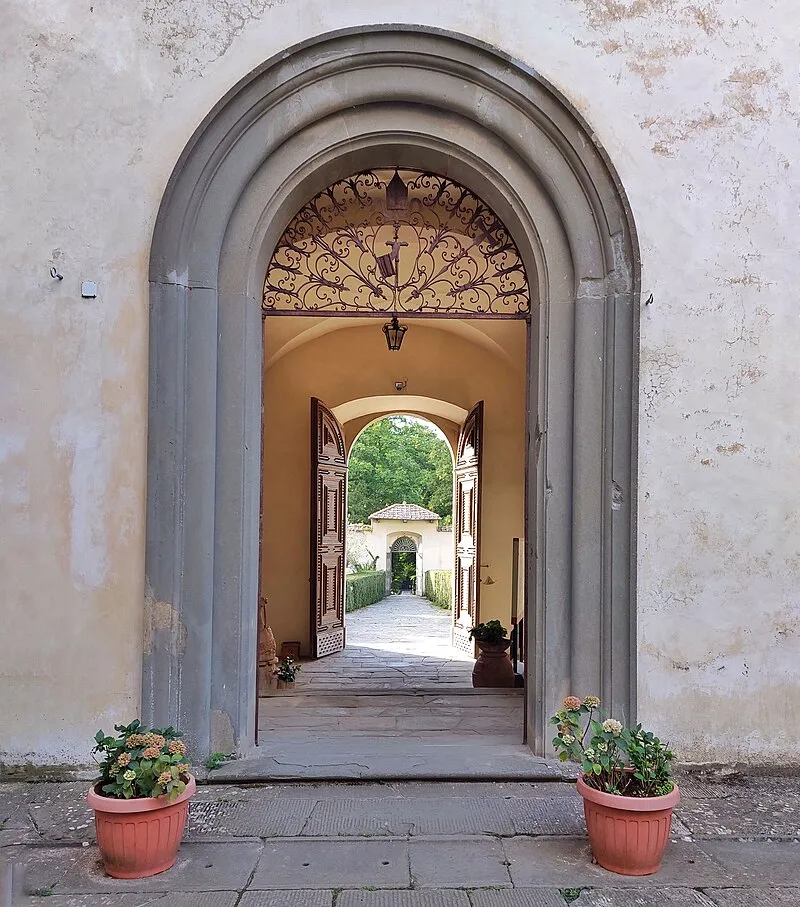
The Cloister of the Meridiana
The Monastery of Vallombrosa is structured around the Cloister of the Meridiana, so named due to the presence of a sundial. This cloister was constructed in the 15th century during the abbacy of Francesco Altoviti, and his coat of arms can still be seen on the finely sculpted corbels that support the cross-vaults of the portico. The cloister serves as a central feature, connecting various spaces within the monastery.
Chapter House and Ante-Refectory
From the cloister, one can enter the Chapter House, also dating back to the 15th century. This room, once used for monastic meetings and the reading of the Rule, is now utilized as a conference room. Adjacent to the Chapter House is the ante-refectory, a space featuring a stone washbasin from 1606, which adds historical significance to the room. In this area, visitors can admire a large altarpiece in glazed terracotta, attributed to Santi Buglioni, depicting the Madonna and Child, Saint James, and Saint John Gualberto. Additionally, a modern pictorial cycle by Mario Francesconi (1998) is displayed, consisting of three triptychs centered around the themes of Mystery, Life, and Death.
Refectory and Kitchen
The refectory, also dating to the 15th century, has been richly decorated in the 18th century. The decoration includes a series of paintings by Ignazio Hugford (1745), including an image of the Last Supper in the background, with Saints of the Vallombrosan Order on the sides and an Assumption scene painted on the ceiling. The kitchen, which was divided by a fireplace with a hood, consists of two rooms. The first room retains its original appearance, while the second room, built in the 17th century, offers a glimpse into the evolution of the monastery’s domestic spaces.
The Mascherone Cloister
The smaller Mascherone Cloister is so named due to the basin with a lion’s head (mascherone) that adorns the space. Built in the late 16th century, this cloister features a loggia at the back, designed by Alfonso Parigi in 1589. The same architect also designed the library in 1584, which was later modernized in the early 19th century in a neoclassical style. The library contains a notable octagonal table, crafted by Antonio Moschini, and the shelves are from the same period. A prominent work in the library is the canvas depicting the Donation of Matilda of Canossa to Saint Bernard of Uberti, painted by Donato Arsenio Mascagni in 1609.
Museum of Sacred Art
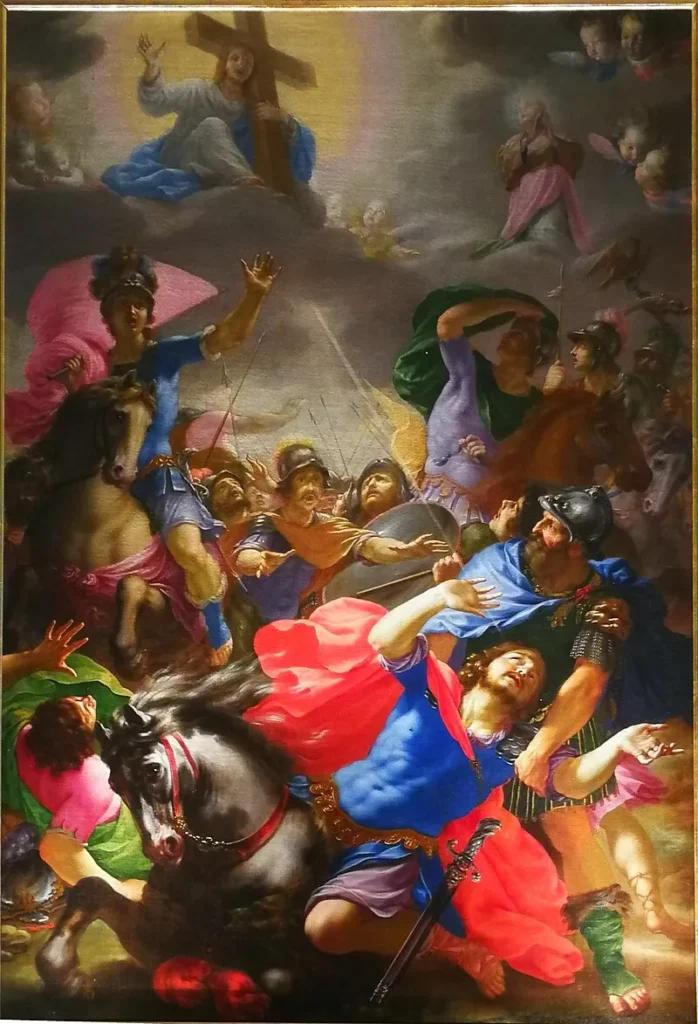
Overview of the Museum
The Museum of Sacred Art, inaugurated in 2006, is housed in the guesthouse of the abbey. This museum showcases works of art that were returned to Vallombrosa after having been dispersed or alienated over the years. The museum features a diverse collection of paintings, goldsmith’s work, and other items from the abbey’s artistic heritage.
Notable Works in the Museum
One of the key pieces displayed in the museum is the Altoviti Wallpaper, a precious and heterogeneous set of cloths created in the second half of the 15th century. This intricate fabric work was begun by Abbot Francesco Altoviti and likely completed by his successor Biagio Milanesi. The designs were created by various artists, some of whom are not identified. In the museum’s hall, an important altarpiece stands out: the Madonna with Child and Saints Biagio, Giovanni Gualberto, Benedetto, and Antonio Abate. Originally attributed to Sebastiano Mainardi around 1485, this piece was later restored and reattributed to Domenico Ghirlandaio and his workshop. The head of Saint Biagio is believed to be a portrait of Abbot Biagio Milanesi, who commissioned the work. Additionally, the museum houses a notable reliquary containing the arm of Saint John Gualberto, crafted by the Florentine goldsmith Paolo Sogliano in 1500. This sacred object is an important part of the abbey’s relic collection.
Works Preserved in Other Locations
Over the years, several works originally from Vallombrosa Abbey have been relocated to various museums. Among these is the famous Vallombrosa Altarpiece, painted by Perugino around 1500. This altarpiece, which originally depicted the Assumption of the Virgin with Saints Bernardo degli Uberti, Giovanni Gualberto, Benedetto, and Michael the Archangel, is now housed in the Galleria dell’Accademia in Florence. The portrait of Abbot Biagio Milanesi can also be seen in this painting. Another significant work is the Dossal of the Four Saints, featuring Saint Michael the Archangel, Saint John Gualberto, Saint John the Baptist, and Saint Bernard of Uberti. Commissioned by Abbot Giovanni Maria Canigiani and painted by Andrea del Sarto around 1528-1529, this altarpiece is now part of the collection at the Uffizi Gallery.
Feast Day
Feast Day : 15 August
The feast day of the Basilica of Our Lady of the Assumption in Vallombrosa, Italy, is celebrated on August 15th. This is the Feast of the Assumption of the Blessed Virgin Mary, a significant day in the Catholic liturgical calendar, commemorating the belief that the Virgin Mary was assumed body and soul into heaven at the end of her earthly life.
Church Mass Timing
Monday : 7:00 AM
Tuesday : 7:00 AM
Wednesday : 7:00 AM
Thursday : 7:00 AM
Friday : 7:00 AM
Saturday : 4:30 PM
Sunday : 11:00 AM , 5:00 PM
Church Opening Time:
Monday : 6:30 am – 07:00 pm.
Tuesday : 6:30 am – 07:00 pm.
Wednesday : 6:30 am – 07:00 pm.
Thursday : 6:30 am – 07:00 pm.
Friday : 6:30 am – 07:00 pm.
Saturday : 6:30 am – 07:00 pm.
Sunday : 6:30 am – 07:00 pm.
Contact Info
Address :
Via S. Benedetto, 2, 50066 Vallombrosa FI, Italy.
Phone : +39 055 862251
Accommodations
Connectivities
Airway
Basilica of Our Lady of Assumption Vallombrosa, Italy, to Amerigo Vespucci Airport, Via del Termine, distance between 1 hr 3 min (68.2 km) via A1/E35.
Railway
Basilica of Our Lady of Assumption Vallombrosa, Italy, to Reggello 50066, Metropolitan City of Florence, Italy, Railway Station, distance between 21 min (13.0 km) via SP 85 di Vallombrosa/SP 85.

